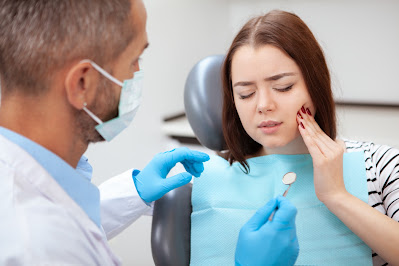How to Handle Dental Emergencies?
What is a Dental Emergency?
What are the Most Common Dental Emergencies?
1. Dental Pain
If the pain comes from food packaging, rinsing and flossing will alleviate the toothache.
Contact a dentist right away because this situation is very painful, but the rinsing is a temporary solution.
If you have an abscess, you may take Ibuprofen every eight hours for the pain and contact a dental professional right away. The doctor will evaluate the need for a root canal or a dental extraction.
2. Chipped Tooth
Another dental emergency is a crack. As soon as you spot any chips in a tooth, visit the nearest dentist in Yellowknife. Do not wait until it hurts because the tooth may fracture.
While getting to the dental office, you may use an ice pack for ten minutes on/off in the brittle area. The cold will help to alleviate the discomfort.
Postponing the treatment will only worsen the crack, and you can even fracture your tooth vertically (at this point, there is nothing to do but extraction).
3. Avulsion
It is a common situation, especially in children and teenagers. We recommend using a mouthguard when playing contact sports because it is typical to hit a partner or a ball and get a tooth knocked out.
Locate the tooth and place it in a container with saline solution. Some people misbelieve it should be milk, but its grease will impede a correct adherence. Remember you have approximately 45 minutes to get to a dentist near you for successful reimplantation. If it is longer, the prognosis is not as good.
4. Dislodged Filling or Crown
If you have a loosened crown or dental filling, we recommend holding it and pulling it out because it can fall, and you may swallow it. Then, you must find an emergency dentist near you for treatment.
In the meantime, you may place a cotton ball or a piece of wax inside to prevent further contamination.
The dentist will evaluate recementing the crown or make a new one. In case of a new one, they will make a new mold for a dental laboratory and place a temporary one. The dental technician takes about a week to make the permanent one (porcelain).
In the case of fillings, the dentist will place a new one. They will drill the dental piece for more retention, etch the tooth, and wash it. Next, they will add the bonding agent for the filling to adhere to. Finally, the dentist will add small layers of composite resin and polish the restoration.
Once they place the filling, they will make you bite down a blue paper for checking the occlusion. Any interferences can harm your temporomandibular joint; hence, this step is very important. Tell the dentist if you feel anything odd when you bite down, and they will correct it for a perfect dental filling.



Comments
Post a Comment